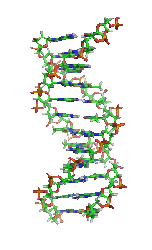The development of human embryonic stem cells, which have the ability to form any cell in the body, may enable us to repair tissues damaged by injury or disease. Initially, these cells could only be obtained through methods that some deemed ethically unacceptable, but researchers eventually developed a combination of genes that could reprogram most cells into an embryonic-like state. That worked great for studies, but wasn't going to work for medical uses, since one of the genes involved has been associated with cancer.
Researchers have since been focusing on whittling down the requirements needed for getting a cell to behave like a stem cell. Now, researchers have figured out a radically simplified process: expose the cells to acidic conditions, then put them in conditions that stem cells grow well in. After a week, it's possible to direct these cells into a state that's even more flexible than embryonic stem cells.
The catalyst for this work is rather unusual. The researchers were motivated by something that works in plants: expose individual plant cells to acidic conditions, grow them in hormones that normally direct plant development, and you can get a whole plant back out. But we're talking about plants here, which evolved with multicellularity and with specialized tissues in a lineage that's completely separate from that of animals. So there's absolutely no reason to suspect that animal cells would react in a similar way to acid treatmentand a number of reasons to expect they wouldn't.
And yet the researchers went ahead and tried anyway. And, amazingly, it worked.
The treatments weren't especially harshonly a half-hour in a pH of 5.45.8. Afterward, the cells were placed in the same culture medium that stem cells are grown in. Many of the cells died, and the ones that were left didn't proliferate like stem cells do. But, over the course of a week, the surviving cells began to activate the genes that are normally expressed by stem cells. This was initially tried with precursors to blood cells, but it turned out to work with a huge variety of tissues: brain, skin, muscle, fat, bone marrow, lung, and liver (all of them obtained from micethis hasn't been tried with human cells yet).
While these cells didn't divide like stem cells, they did behave like them. Injecting them into embryos showed that they were incorporated into every tissue in the body, meaning they had the potential to form any cell. That suggests they are a distinct class of cell from the other ones we're aware of (the researchers call them STAP cells).
But, if they don't grow in culture, it's hard to use or study them. So, the authors tried various combinations of hormones and growth factors that stem cells like. One combination got some of the STAP cells to grow, after which they behaved very much like embryonic stem cells. But a second combination of growth factors got the cells to contribute to non-embryonic tissues, like the placenta, as well. So, in this sense, they seem to be even more flexible than embryonic stem cells, and seem more akin to one of the first cells formed after fertilization.
The people behind this development have done a tremendous amount of work, so much that it was spread across two papers. Still, like many good results, it raises lots of other questions. Many cells in our bodies get exposed to acidic conditions every daywhy do those manage to stably maintain their identity? A related question is what goes on at a molecular level inside the cell after acid treatment. Understanding that will help us learn more about the stem cell fate itself.
And then there are the practical questions. How close are these STAP cells to an actual embryonic cell, in terms of the state of its DNA and gene expression? And, if there are differences, are they significant enough to prevent these cells from being used in safe and efficient medical treatments?
January 30, 2014. DOI: 10.1038/nature12968, 10.1038/nature12969 (About DOIs).
See the rest here:
Acid bath turns cells from any tissue into stem cells
